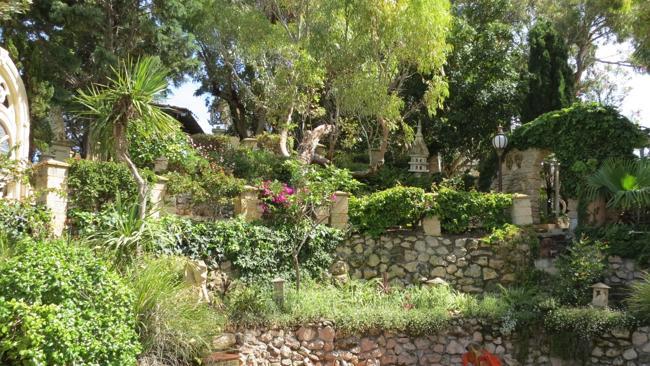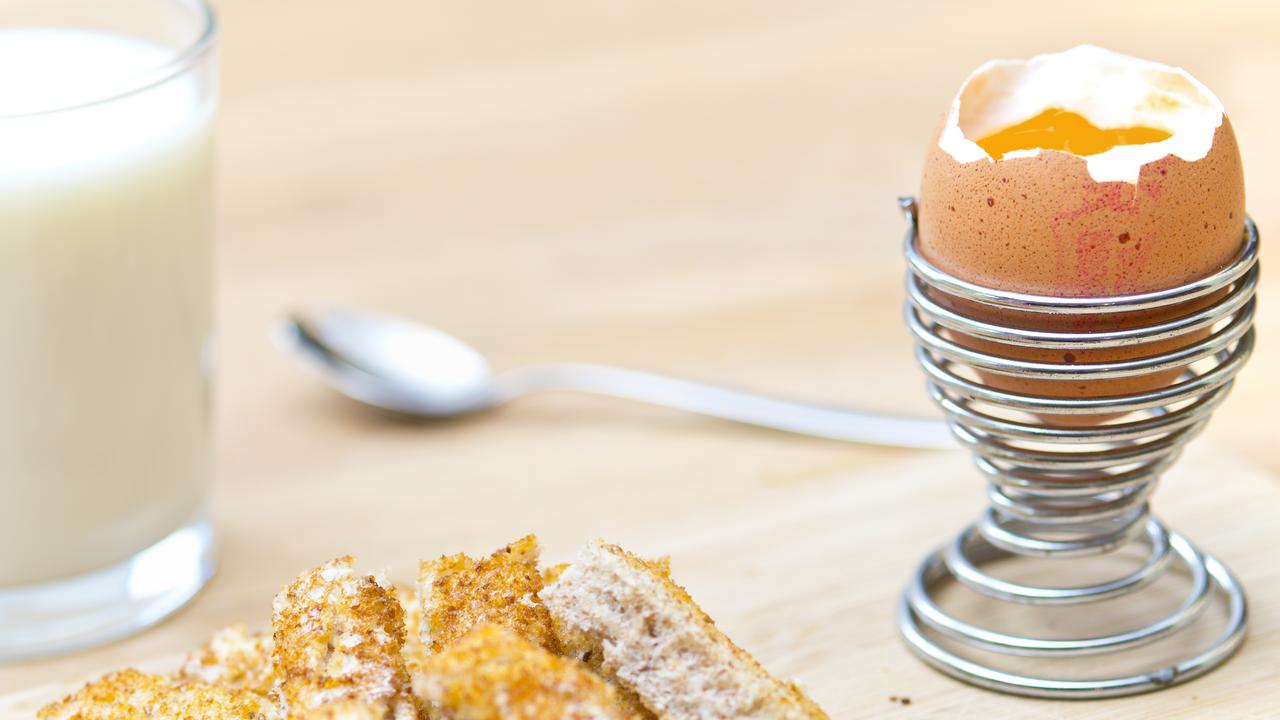Open Garden: Paul’s Garden, WA
PAUL’s Garden in Sorrento is a 2000sqm hilltop garden in Perth with wonderful views across the ocean to Rottnest Island.

Owners: Paul and Elizabeth Caiacob. Open this weekend 10am to 4.30pm entry $8, under 18s free
Describe your garden: It’s a 2000sq m hilltop garden in Perth with wonderful views across the ocean to Rottnest Island. A steep driveway takes you past the front garden and Spanish style courtyard to a terraced patio and swimming pool at the rear, and a series of waterfalls and ponds. Three levels of terraces lead you up to a loggia at the top, which has hosted our three sons’ weddings
What makes it special: Nearly 50 years of hard work have transformed a steep sand dune into a glorious oasis. It’s hard to believe now but it was on the edge of civilisation then — far enough out of town that the beautiful ocean views were affordable. We were the first house built here and when we started the garden in 1973 there was not a single plant or blade of grass. We scrounged every rock to build the terrace walls, carrying them up by hand. Now there are some big trees that make a huge difference to the temperature of the garden, and they shelter ferns, ground covers and all sorts of plants.
Biggest challenges: Fierce ocean winds, the steep block and pure sand.
Favourite part: I love working in stone and rock. There are more than 60 of my sculptures throughout the garden, including a stained-glass rose window set in what looks like carved, local limestone but I used concrete mixed to look like limestone.
What’s in flower: Roses, geraniums, vincas and petunias. Only the toughest survive.
Extras: Plants, Elizabeth’s marmalades and handmade satin pillowslips for sale. Devonshire teas. Money raised goes to Save the Children Fund. Poetry readings at 11am and an a cappella quartet at 2pm, both days.
* * *
FLORA
IT’S been a long time since an Australian book on pests and diseases was published, so I’m pleased to review Pests, Diseases and Beneficials: Friends and Foes of Australian Gardens (CSIRO Publishing $39.95) by F. David Hocking, who brings more than 50 years’ experience to his subject. Its focus is on identifying insects, small animals and physiological disorders, with excellent colour photographs and descriptions forming the main chapters.
Helpfully, they’re organised by where you’ll likely find the problems, such as on leaves, flowers, trunks or soil.
While it doesn’t provide lists of treatments to use, it enables accurate diagnosis to critically distinguish between beneficial or harmless organisms and those that do damage.
* * *
TWIG
As our tomatoes are ripening, we’re beset by hoards of whiteflies. Something else is eating patches of skin, then a brown fly moves in.
Anita Halbe, H obart
Whiteflies need early control. Yates Natrasoap is suitable for organic food crops, or hang sticky traps made from yellow card or plastic, covered in horticultural glue or Vaseline. The skin damage is probably from slugs or snails, then ferment flies are attracted to the exposed flesh. Try diatomaceous earth or exclusion bags.
Our star jasmine has pale leaves with green veins. Many leaves are yellowing and falling off and we’ve seen white moths on the foliage.
Linda McAvenna, by email
This may be a deficiency of iron, copper, zinc or manganese caused by too high soil pH, which makes these nutrients unavailable to plants. It’s common in proximity to concrete or mortar containing lime. If the pH tests above 7, apply sulphur or Yates Acitone. Moths are unlikely to be causing damage.
We put in 25 manzanillo olives 12 years ago in south gippsland, in an open sunny position. they’ve grown and flowered but not yielded any fruit. Why?
David Pollard, Victoria
Olives don’t fruit well in humid areas, but your region is suitable. Lack of soil moisture and temperatures above 40C reduce fruit set. Technically Manzanillo is self-fertile but practically, cross-pollination is essential for cropping. Choose two of Arbequina, Coratina, Pendolino, Picholine and Hojiblanca.
My tamarillos are growing well and producing more fruit each year. Should they be pruned after harvesting?
Wilma Attrill, Kettering, Tasmania
Tamarillos, or tree tomatoes, are sub-tropical shrubs or small trees that don’t tolerate frost or wind, so yours must be in a protected spot. They live only five to 12 years, are very productive but have brittle stems. Prune after harvesting or early spring to shorten branches, reducing risk of breakage, and to promote new growth.



